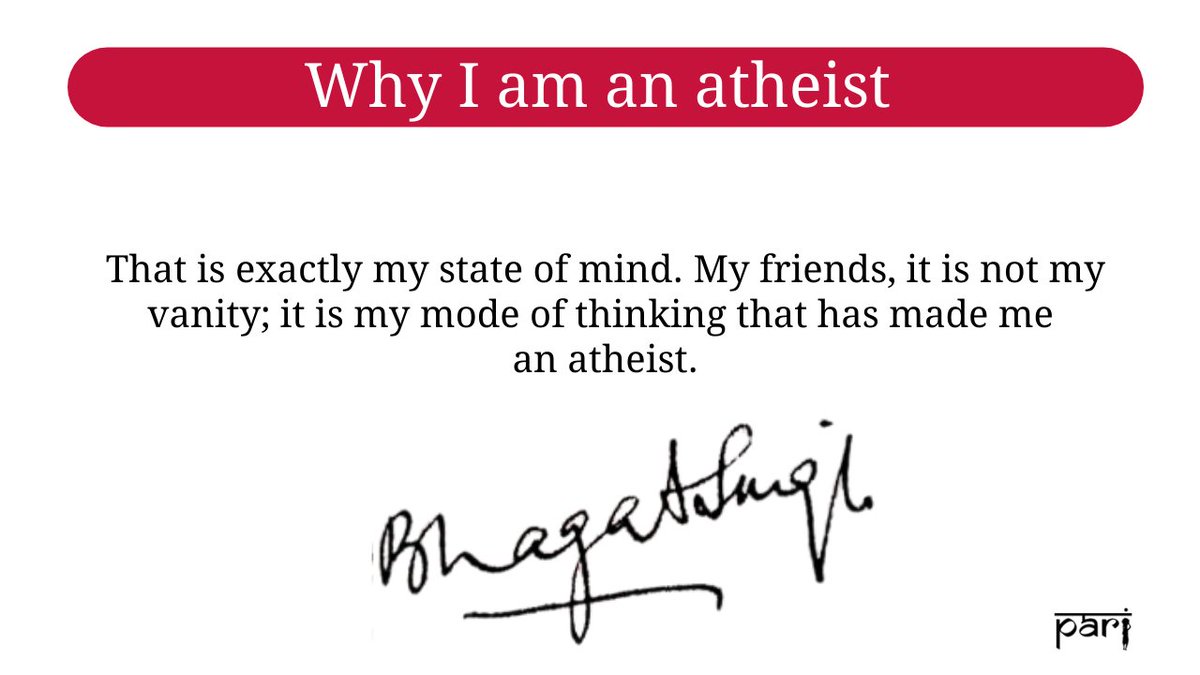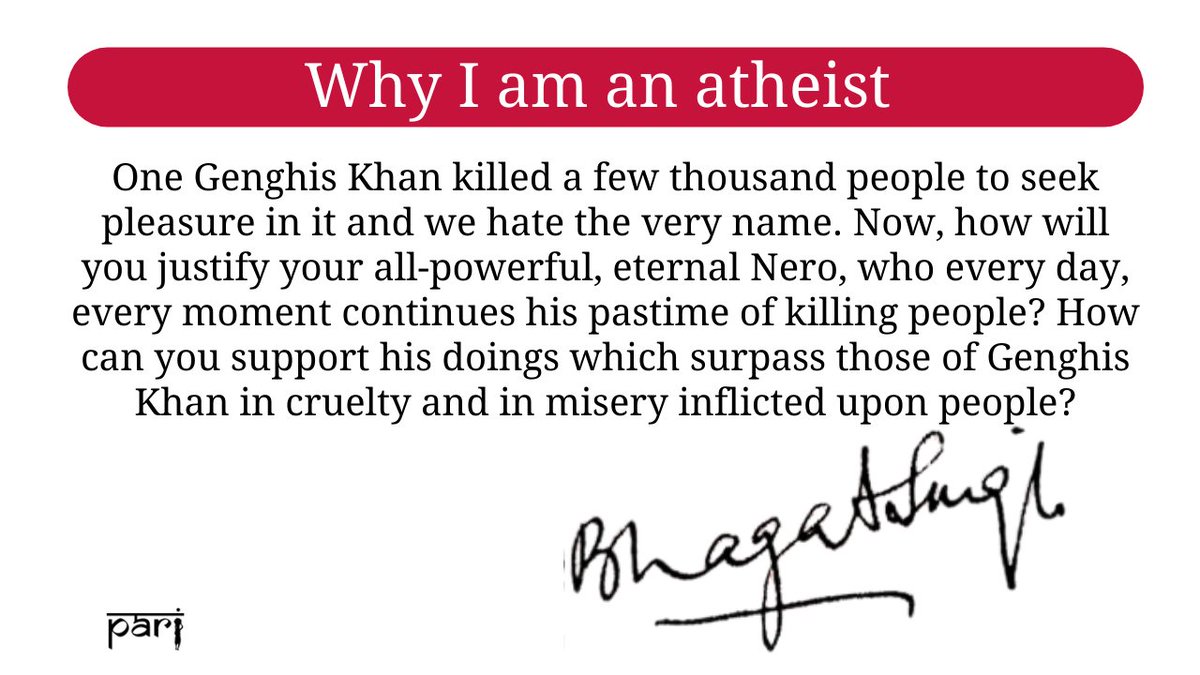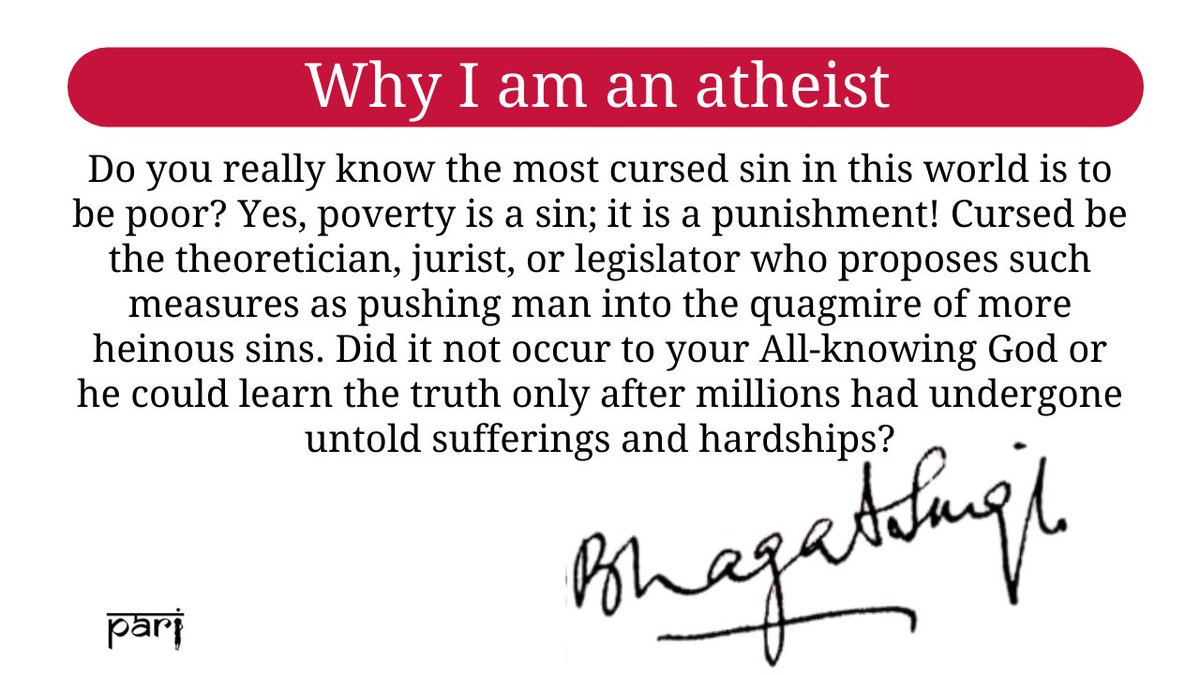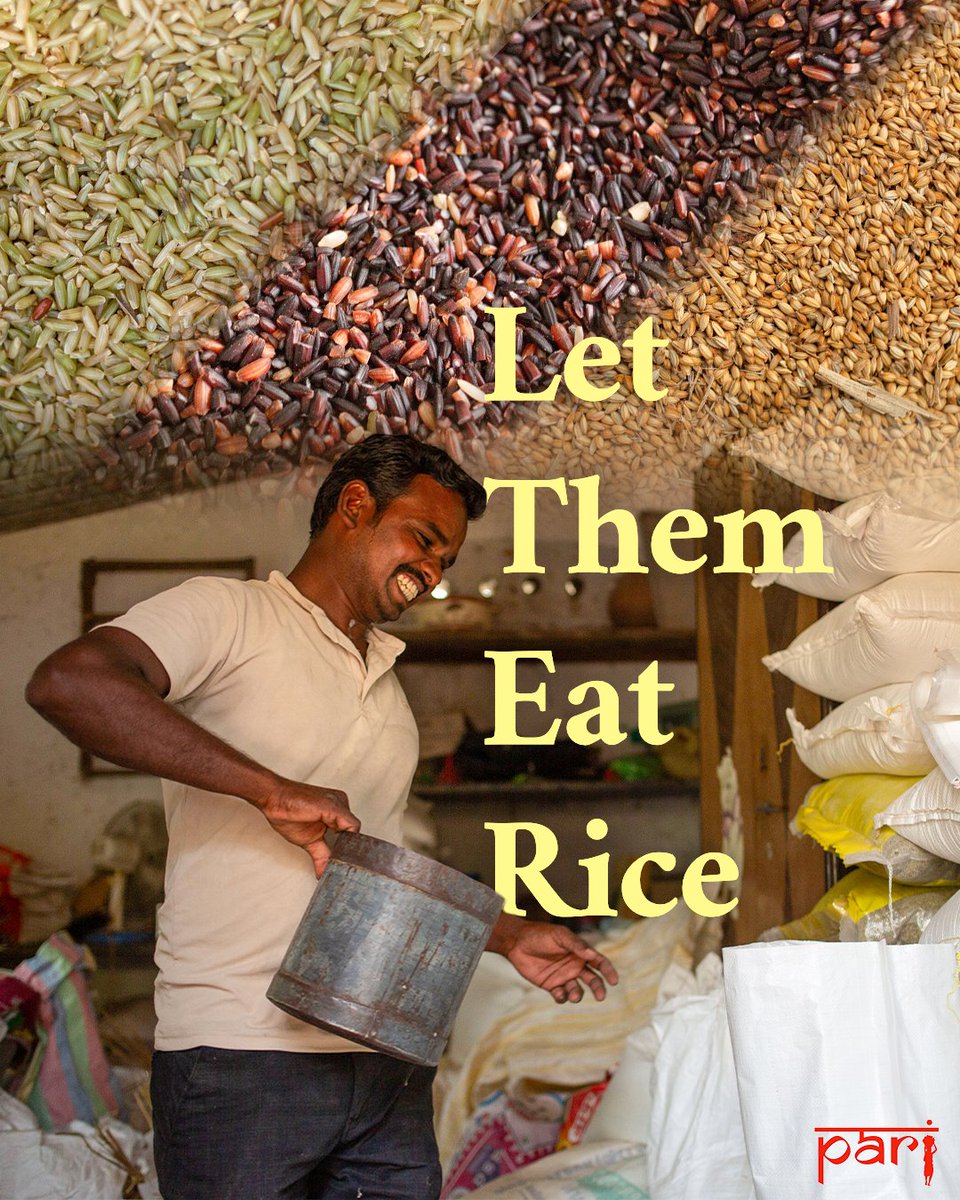Bhagat Singh’s ideology is not meant to be hijacked. He has written with remarkable intellectual clarity. Read what he stood for in his essay — Why I Am an Atheist.
Do not let anyone cloud your mind and reasoning. Snippets in the 🧶 below, link at the very end
Do not let anyone cloud your mind and reasoning. Snippets in the 🧶 below, link at the very end

This 5,790-word essay was first published in People, a periodical brought out from Lahore, in September 1931. 

In it, Bhagat Singh, a revolutionary freedom fighter, a socialist in his beliefs, a powerful writer, and a prolific journalist, begins by asserting that his atheism is the result of rational inquiry as opposed to vanity or pride. 

He had an 'unswerving, unwavering belief in God' through childhood and his time at the National College, Lahore (which he joined at 15), writes @ProfChaman Lal (honorary advisor, Bhagat Singh Archives & Resource Centre, Delhi Archives) 

His own convictions changed radically when he started to study the existence of God more seriously: 'By the end of 1926, I was convinced that the belief in an Almighty, Supreme Being who created, guided and controlled the universe had no sound foundations.' 

In 1923, when Singh, who was born in 1907 in Banga village of Lyallpur (now Faisalabad in Pakistan), came to Kanpur, he joined the Hindustan Republican Association which he refers to it as the ‘Revolutionary Party’ in his essay, found his comrades to be ambiguous on the subject 

In prison on a death sentence, people turn to God, not Bhagat Singh. He wrote and read prodigiously. 

In this essay, Bhagat Singh asks the theists: why did this god create a world full of woe and grief? To the Hindus, he asks: 'What is your view about those punishments inflicted on the people who were deliberately kept ignorant by selfish and proud Brahmans?' 

He writes and notes that 'Merciless criticism and independent thinking are the two necessary traits of revolutionary thinking'
And God is not an exception to it.
And God is not an exception to it.

Bhagat Singh believed, and wrote in this essay, that in the long run, all religions, faiths, theological philosophies, and religious creeds become supporters of tyrannical and exploiting institutions, men, and classes. 

Why I Am an Atheist – which historian @irfhabib, calls 'a strong rebuttal of blind faith and a zealous defence of reason' – is a product of this period. He notes that Bhagat Singh matured as a thinker and his prison diary reveals the trajectory of his political evolution. 

He drafted 4 manuscripts while in jail: The Ideal of Socialism, Autobiography, History of Revolutionary Movements in India, and At the Door of Death. He also wrote several other papers, including Why I Am an Atheist and Letters to Young Political Workers. 

Bhagat Singh, who was 23 when he was hanged, had no illusions regarding his impending execution. Beliefs [in god] make it easier to go through hardships, but as an atheist, the only option is to depend on yourself, he noted.
"I am going to sacrifice my life for a cause."
"I am going to sacrifice my life for a cause."

The day [he sacrificed his life] ushered in a new era of liberty when a large number of men and women, taking courage from the idea of liberating humanity from sufferings and distress, decide that there is no alternative before them except devoting their lives for India’s freedom
The full 5,790-word essay, first published in People, a periodical brought out from Lahore, in September 1931 is available here to read, download and share.
ruralindiaonline.org/en/library/res…
ruralindiaonline.org/en/library/res…
Tributes Shivaram Hari Rajguru, Sukhdev Thapar, and Bhagat Singh on #MartyrsDay
• • •
Missing some Tweet in this thread? You can try to
force a refresh



























